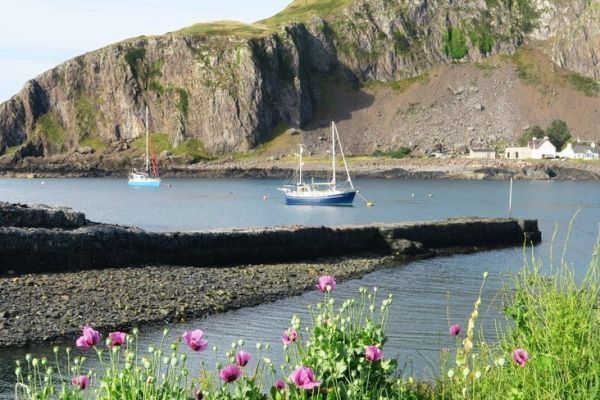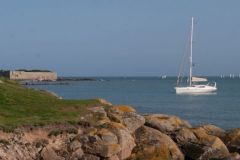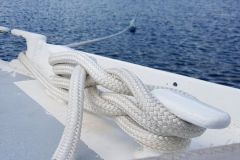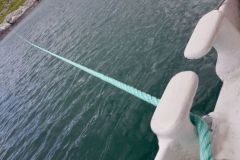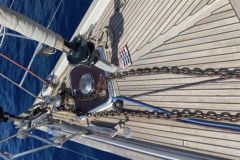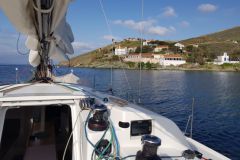Play hide-and-seek with the current and discover a peaceful anchorage.
Tide times and a light southerly wind oblige, so we decide to take shelter as the current at the end of the Jura sound carries us along at over 3 knots. The geology of this region is made up of "lines of rock" clearly visible on a map.

The islands are rather elongated in shape, with small fjords providing good shelter. Underwater, on a smaller scale, a pebble is rarely isolated, and can form a natural barrier protecting the beaches, but on the other hand, complicates anchoring. This is what we discover at Carsaig Bay, offering a most peaceful stopover.
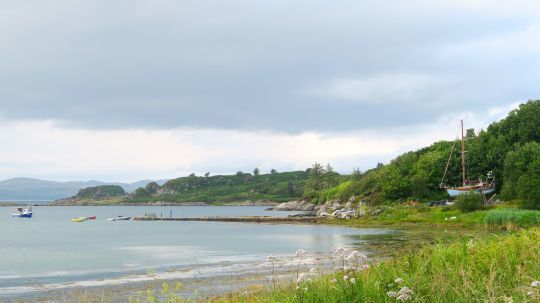
Although the bottom is sandy, a high concentration of kelp makes us seriously doubt the anchor's hold. What's more, we can't get close to the pretty beach, protected by a famous line of outcropping rocks. As a precaution, we manoeuvre to bury our pickaxe as deep as possible and add a barracuda.
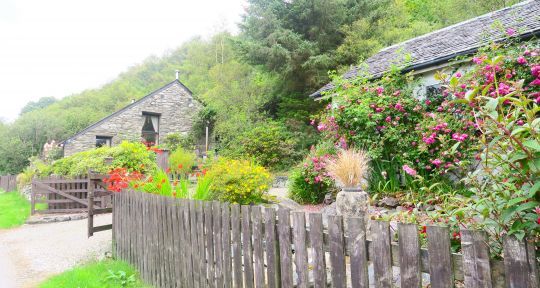
The stone jetty at the end of the beach invites you to take a stroll. Small cottages lining the path take us to the village of Tayvallish, on the other side of a kind of fjord at the bottom of which we wouldn't have had time to venture.
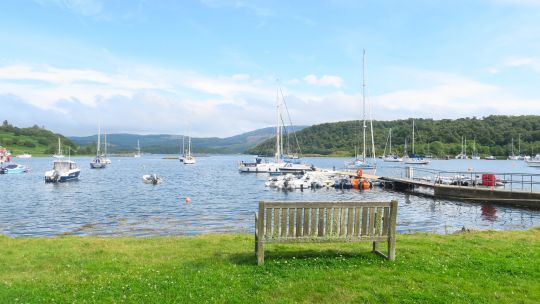
The village is also at the end of a small, well-protected cove, where you'll find pretty little boats, a campsite with a waterside pub and a supermarket. The Carsaig Bay anchorage gives access to this beautiful spot, which we had spotted on the map but didn't have time to go up by sea: a charming surprise, this place where time seems to have stood still.
Back in Carsaig Bay, we spotted a local fishing boat moored on a trunk, running solely on solar energy. Despite a light southerly wind, the night at anchor was a quiet one.
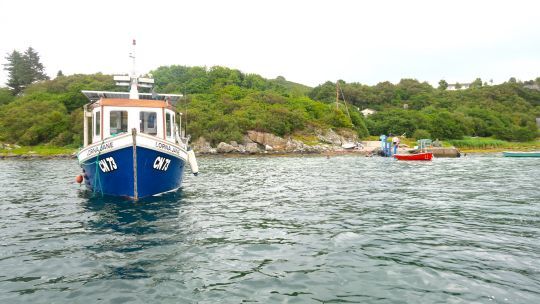

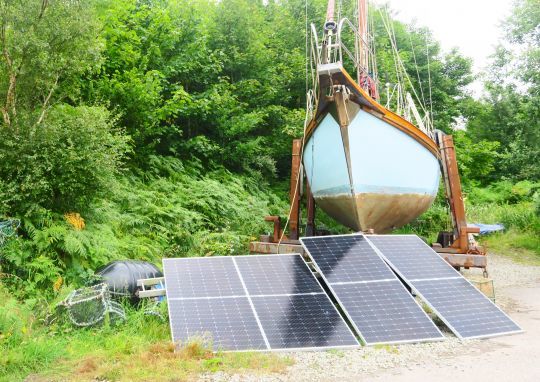
The four seasons in Easdale.
We leave Carsaig Bay and sail along Luing Island to tiny Easdale Island.
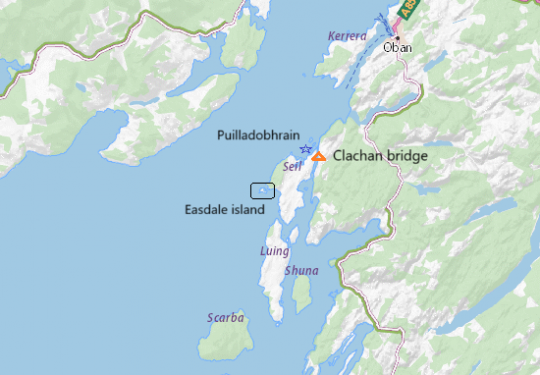
The island has an anchorage to the north, separated from Seil by a narrow passage. The whole area is a former slate quarry, now inactive. However, the workers' dwellings have been converted into small holiday homes.
Arriving at this anchorage is a tricky business: the entrance is very narrow and the two poles marking the entrance are placed on rocks on which the swell is carrying dangerously.
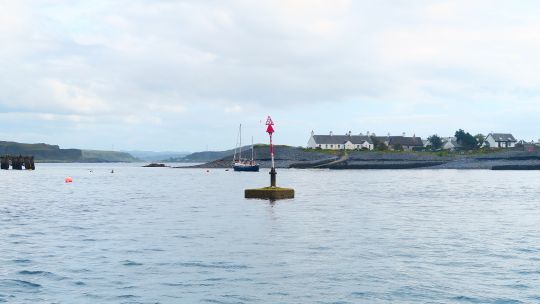
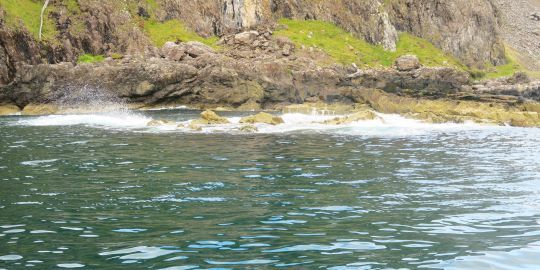
Concentrating, we hold our breath long enough to make the turn to starboard. Once inside, the area is quiet but cramped, with little room to maneuver a 14-meter sailboat. The dark slate bottom quickly motivates us to take one of the visitor lockers (there are 5). We disembark on Easdale Island on a summer's day and set off on a walking tour of the island.
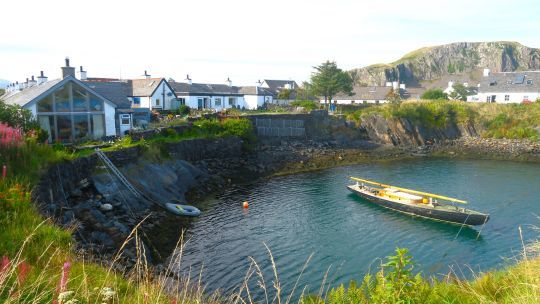
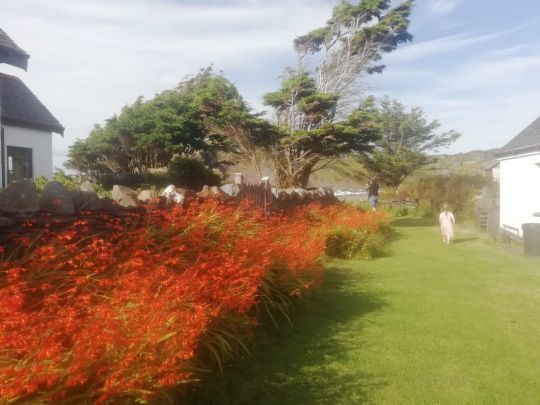
Well worth a visit! The white cottages are adorable, the vegetation is semi-tropical and the old quarries are real swimming pools for a (cool) dip.
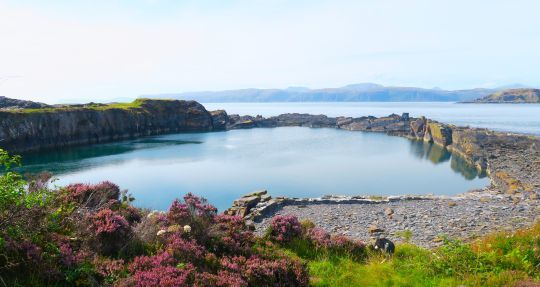
At the end of the day, we'll be enjoying spring-like temperatures as we dine on a beachside barbecue on the island of Seil. Squalls and strong winds are forecast for the night. We return on board to tie up the trunk.

During the night, we were awakened by a wintry gale, a squall more violent than the others, and the captain started the engine to relieve the load on the trunk. Indeed, if the trunk were to fail, we'd only have a few seconds before ending up on the rock of one of the entrance poles, just behind us...
Torrential rain pelts the surface, flattening the water. Low clouds speed past in an end-of-the-world sunrise, while lightning streaks the sky and thunder booms all around us - what a sight!
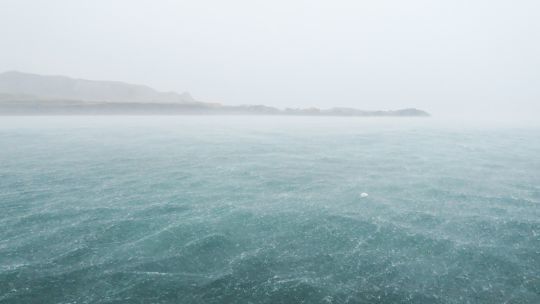
In the late morning, the weather clears as if by magic. We venture ashore to Seil Island to stretch our legs and recover from our emotions. It now feels like autumn.
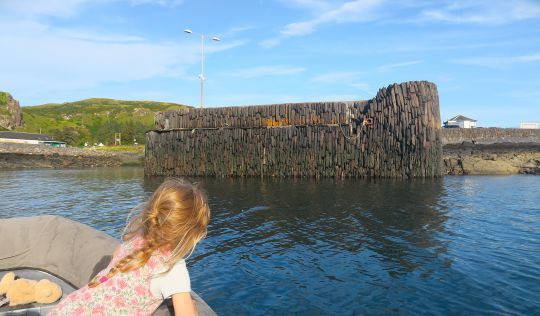
We've lived through all 4 seasons in this anchorage, which we're leaving with the same caution as when we arrived.
The otter pool
We skirt the Isle of Seil, marvelling at its vegetation and the jaggedness of its west coast. Puilladobhrain (otters' pool, in Gaelic) is said to be one of the most popular anchorages for local sailors.
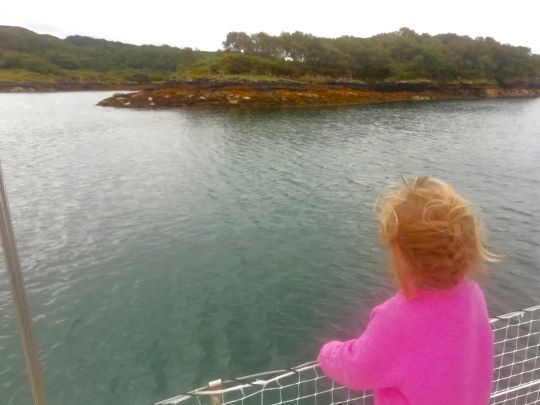
A good line of rock closes and protects this anchorage, which we enter from the north. On the port side, high green cliffs with sheep clinging to them in small white patches, and opposite us, the first islet hosting an impressive welcoming committee: a colony of seals. There are about twenty of them watching us from their rocky promontory.
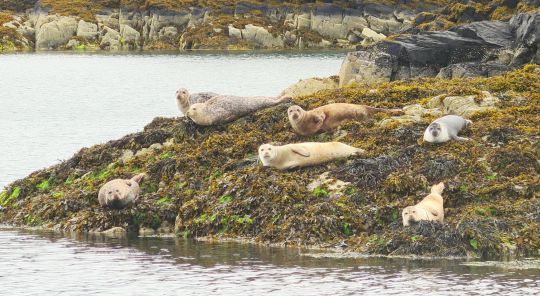
The long cove is already occupied by a number of sailboats. In a bit of a tug-of-war, we take the last berth, close to the other end of the islet where the seal colony lives.
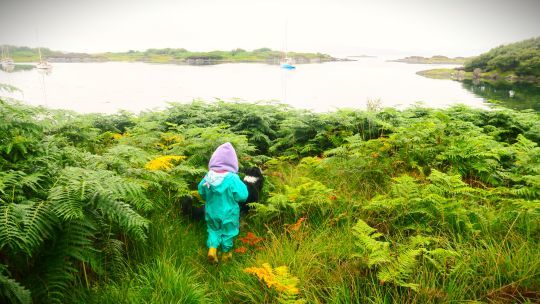
In the dinghy, we reach the end of the mooring area for a stroll "into the wild"... to our great surprise, a sign indicates the opening hours of a pub! We take the path across the island and arrive at the foot of a magnificent stone bridge spanning the Clachan Canal, a narrow arm of the sea. Clachan bridge is the only way to connect the Isle of Seil to the shore, and takes just 30 minutes by car to the town of Oban.
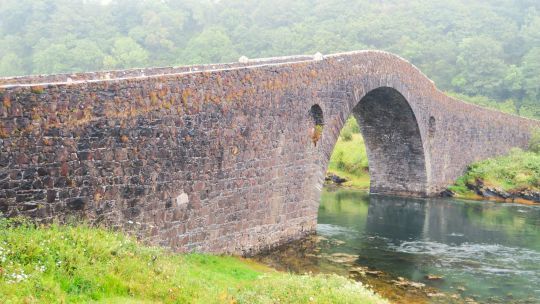
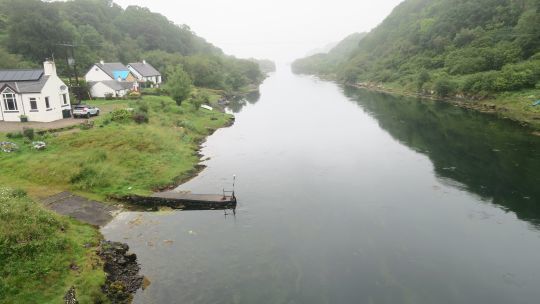
On the right, along the road, is the famous pub. The atmosphere inside is warm and inviting, and it's sure to become a must for family and friends visiting us in Scotland. As luck would have it, we attend the local scarecrow competition (yes, there is such a thing!). And every household along the route is redoubling its inventiveness to present the most original scarecrow!

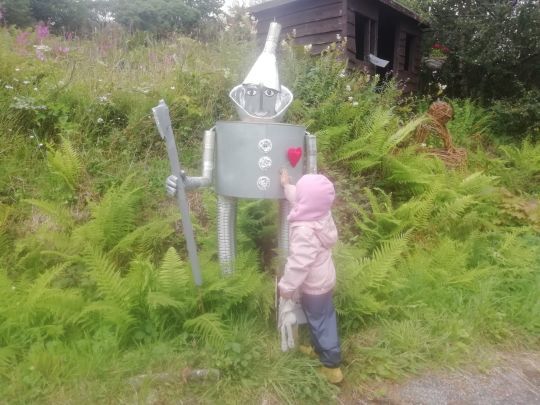
At the end of the day, we return to the anchorage and, at sunset, spot two otters playing in the rocks. They skilfully slipped between the shore and the water and managed to lose us in a trick. On the shore we find the famous clues confirming their occupation of the area. We return on board, delighted by our day's discoveries.


In the early hours of the morning, on their way to retrieve the trap, once again full of small, flat, hairy crabs that are inedible except in soup, the captain and the young lady observe deer fleeing through the ferns. This anchorage, sheltered from most winds and swells and a good 6 miles from Oban, is an attractive stopover where the wildlife is rich and wild.
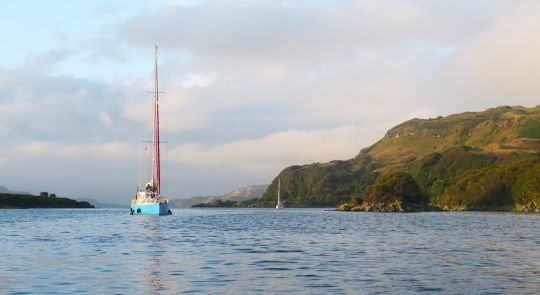
This time we set sail from Puilladobhrain for a return to civilization: a guaranteed hot shower, supermarkets for good provisions and, for the little one, an ice-cream parlour and a playground!

 /
/ 